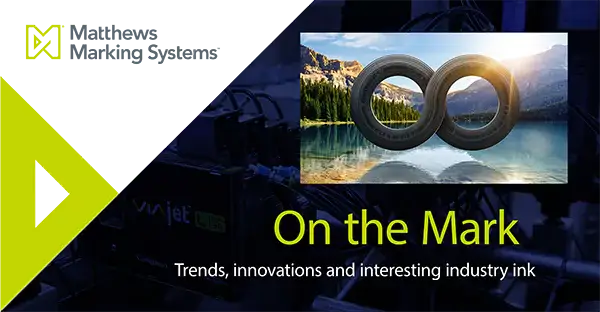On the Mark #10: Tire manufacturer on the road to sustainability, the fungus among us, scaling reuse
Catching up on interesting news and innovations in production, packaging and more

Road to sustainability.
Continental A.G. says it wants to use 100% sustainable materials in its tires by 2050. Since the tire manufacturer already uses 15-20% renewable and recycled materials in passenger car tires today, it’s well on the way to getting there. The company cites five sustainable options that it believes will help it achieve this goal. These solutions include more sustainable hevea (natural rubber) and increased traceability to confirm sustainable production; growing sustainably with dandelion rubber; incorporating more recycled plastics in tires; moving to fully circular tire production; and identifying more bio-based materials in tire construction. Source: rubbernews.com.

Researchers discover mushroom to replace fossil-based plastic.
Scientists are looking to mushrooms as an environmentally friendly packaging solution to replace the use of plastics. Mycelium, the root structure of mushrooms, is the primary component to create the packaging material. Mycelium has three layers, each with different textile properties that could be used in a variety of packaging applications. The mushrooms grow in the wild, but in order to create and harvest the packaging materials without harm to the natural environment, they would need to be created in a controlled lab environment. Researchers believe mushrooms to be a promising packaging material in the future, as it could be home composted after use. Other innovations with mycelium include a prototype set of headphones and the development of a bio-recycling facility where the mycelium was “trained” to break down and digest plastic. Source: packaginginsights.com.
What’s needed to scale reuse?
As reusable packaging is seen as a necessity to much of the world, brands of all sizes are responding by making commitments to reusable packaging and starting pilot programs. The question is, can they deploy a reusable packaging program at scale? Tom Szaky of Terracycle explains that reusable packaging is indeed proven scalable and offers examples of reuse models at work today, including the refill model (where consumers refill their own packaging) and prefill model (where consumers pay a deposit then return the empty container). Szaky explains his perspective on the four aspects needed to scale prefill reuse, including making it a commercial priority, supporting it in market, creating the right value equation and picking scalable materials. He says legislation is in the works and organizations should start planning for reuse now. Source: packworld.com.
Plastic bottoms out list of perceived sustainability among consumers.
After considering the sustainability of different types of packaging materials, consumers around the world have concluded that plastic is the least sustainable. This is according to the 2022 PMMI report, “Future of Packaging and Sustainability.” The report found that the only region where another material ranked lower than plastic was in the middle east, where metal was reported as slightly less sustainable than plastic. Consistent with these findings are consumers’ reported reduction of plastic usage. More than any other habit, including reducing energy consumption, using less water and repairing broken items instead of replacing them, consumers reported that they have reduced their use of plastic to make a positive impact on the environment. Source: oemmagazine.com.
